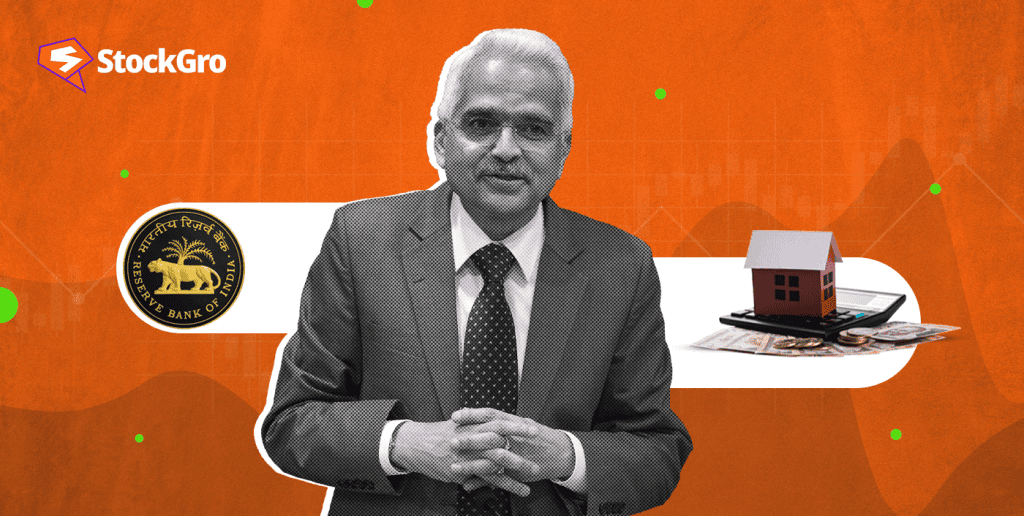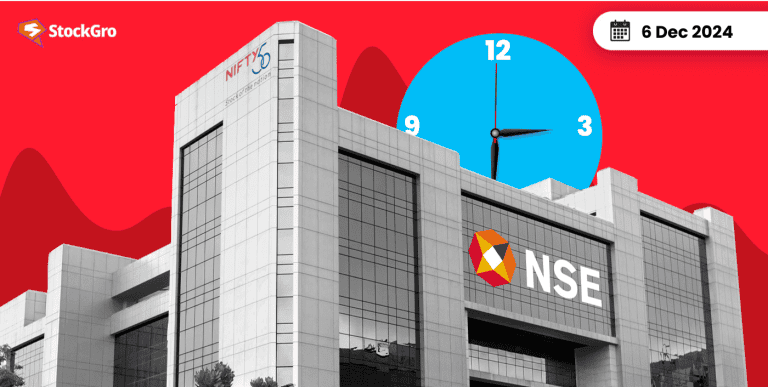
Following its three-day meeting today (6th December 2024), the Monetary Policy Committee (MPC) of the Reserve Bank of India (RBI) made important pronouncements. The verdict on the repo rate, which has been the buzz of the country for the last several days, is made public by the six-member panel, chaired by RBI Governor Shaktikanta Das.
India is now dealing with several economic issues, including rising inflation and reduced GDP growth. Having met in April, June, August, and October, this marks the fifth MPC session for FY25. Setting the position to neutral, keeping other key rates constant, and keeping the repo rate at 6.5% were the main features of the October meeting.
Let us take a look at the key takeaways from RBI MPC decisions.
Key takeaways
Predictions for GDP growth
RBI Governor lowers the previous forecast for FY25 GDP growth to 6.6% from 7.2%.
| Time | GDP rate cut from | GDP rate cut to |
| FY25 | 7.2% | 6.6% |
| Q3FY25 | 7.4% | 6.8% |
| Q4FY25 | 7.4% | 7.2% |
| Q1FY26 | 7.3% | 6.9% |
Repo rate unchanged: What does this mean for home loan rates and your EMIs?
The RBI maintained the policy rate at 6.5% for the eleventh time with a 4-2 MPC decision.
Home loan customers would not get any instant relief from this judgment because the EMIs will not change. Because the rate reduction cycle is still in place, the borrower would not see immediate relief in home loan Equated Monthly Installments (EMIs) as a result of this decision. Unless interest rates are lowered, home loan borrowers will keep having to pay the same rates.
Also read: Enabling EMI Options on Your Credit Card.
CRR decrease to 4%
Although the liquidity of the banking system is still sufficient. The tax outflows, a rise in the amount of currency in circulation, and capital movement instability might cause system liquidity to become more restrictive in the upcoming months.
To mitigate this possible liquidity tension, the Cash Reserve Ratio has now been lowered. All bank CRR shall be lowered to 4% of NDTL (Net Demand and Time Liabilities). The standing deposit facility (SDF) stands at 6.25%, and the marginal standing facility (MSF) and the bank rate at 6.75%.
Inflation is predicted to increase. The RBI raised the FY25 CPI inflation goal from 4.5% to 4.8%.
Amendments to FCNRB deposits
The decision was made to raise the interest rate caps on FCNRB (Foreign Currency Non-Resident) deposits to draw in additional money. As a result, starting today (6. 12. 2024), banks are allowed to increase FCNRB deposits with maturities of one year to less than three years at rates that do not go beyond the overnight alternative reference rate maximum, which is now 200 basis points.
The Bharat Connect platform will be connected to the FX retail platform
It is currently suggested that the FX retail platform, which debuted in 2019, be connected to the NPCI Bharat Connect platform. This would allow customers to utilise bank and non-bank payment system providers to transact on the FX retail platform. With sufficient protections, this will increase the grasp of FX, improve user experience, and encourage equity and transparency in pricing.
A significant shift in agricultural loans without collateral
The RBI has agreed to raise the maximum amount for farm loans without mortgage from ₹1.6 lakh crore to ₹2 lakh per applicant. This will significantly increase small and marginal farmer’s access to loans.
UPI credit line
RBI allowed small finance banks to use the UPI to offer pre-approved loan lines. This will improve formal credit and significantly expand financial inclusion, especially for those who are new to credit.
Handling of mule accounts
The Reserve Bank innovation lab in Bengaluru has created a novel AI-based model called mulehunter.ai in aid of the ongoing initiatives to curb and lessen digital fraud.
Also read: Cybersecurity Stocks to Invest in for 2025.
Podcasts
The RBI has decided to add podcasts as a new way of communication. They believe this will add to their reach.
Bottomline
The rate has stayed constant at 6.5% since its most recent hike in February 2023. The RBI is mandated by the government of India to keep consumer price index-based inflation at 4%, with a 2% allowable variance. Reactions to the updates are still flooding in. Patience is required to find out what will be the effects of these policies.
Also read: Cloud Computing Stocks to Watch in 2025.
FAQs
- What is RBI MPC?
MPC refers to the Monetary Policy Committee of the RBI. It is entrusted to prepare the monetary policies of the country. Following a three-day discussion that started on 4th December, the MPC, which is overseen by the Reserve Bank of India (RBI), presented its bi-monthly policy conclusions on Friday at 10:00 am.
- What is the date of RBI monetary policy in 2024?
The updates of the MPC were much awaited. On December 6th, the Monetary Policy Committee (MPC), which is chaired by the Reserve Bank of India (RBI), released its bi-monthly policy determinations. The key takeaway has been the unchanged repo rates.
- What is the RBI rate cut?
The proportion of total deposits of a bank that must be kept in liquid cash with the RBI acting as a reserve is known as the CRR. To increase liquidity in the financial sector, the Reserve Bank of India (RBI) cut the cash reserve ratio (CRR) by 50 basis points (bps) on Friday.
- How many MPC are there in India?
The Central Government-appointed members of the Monetary Policy Committee will serve four-year terms. The Monetary Policy Committee (MPC) has six participants, three of whom are selected by the central government and three of whom are RBI employees.
- Who are the 6 members of MPC RBI?
The Monetary Policy Committee (MPC) of the Reserve Bank of India (RBI) is composed of the following six members: Dr. Michael Debabrata Patra is the Deputy Governor in charge of monetary policy. Shaktikanta Das is the Governor of the RBI and MPC Chairperson. The Executive Director in charge of monetary policy is Rajiv Ranjan. The director of the Delhi School of Economics is Ram Singh. Saugata Bhattacharya and Nagesh Kumar are also part of this committee.

